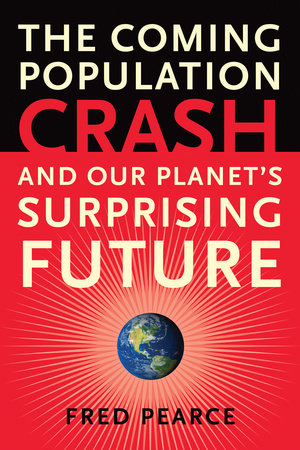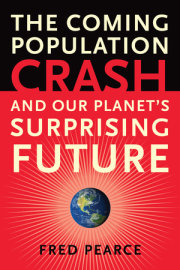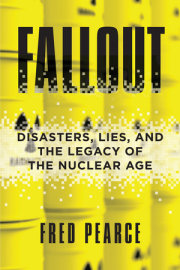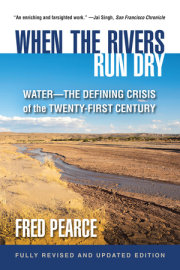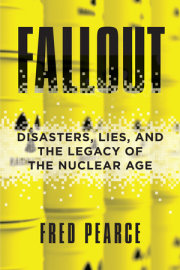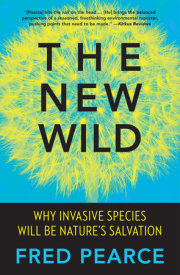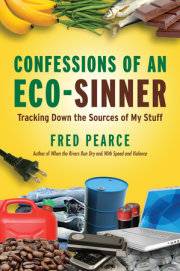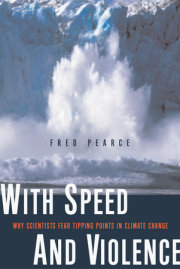INTRODUCTION Demography is destiny. But not always in the ways we imagine. It underlies much of our world, shifting the tectonic plates on which our civilization is built. Never has that been more true than today. Wherever we look, population issues are among the most toxic headline-grabbers. From Gaza to Grozny and Rwanda to Afghanistan, baby booms are blamed for war and genocide. Festering slums burst into tribal violence in Kenya. Teenage terrorists lurk in refugee camps and overcrowded madrassas. Migrants from poor, overbreeding states are flooding Europe and North America. Overpopulation is the unspoken driver of environmental destruction. Millions of environmental refugees will soon be fleeing from spreading deserts and drowned deltas, as China’s billionplus inhabitants undermine all efforts to halt climate change.
The stats seem scary, too. The world’s population is approaching seven billion—four times what it was a century ago. Never have there been so many mothers, and with half the people in some countries under sixteen years old, there are billions more baby-makers in the pipeline. Meanwhile, the world’s masses are on the move. Some 200 million people go to bed in a country different from the one they were born in.
No wonder the language is bleak. Dickensian. Malthusian. It’s Sodom and Gomorrah. It’s Armageddon. We fear an overpopulated world teeming with the dispossessed and the alienated, the fanatical and the fascist, the wetbacks and the snakeheads, the Humvee-driving superpolluters and the dirt-poor deforesters. Surely we are racing to demographic disaster.
And yet slamming on the brakes seems almost as dangerous. For meanwhile, the insurgency of the old is looming. We are all living longer, healthier lives. Life expectancy has doubled since the 1950s. Back when I was born, 150 babies out of every thousand died before their first birthday. I could have been one of them. Now only fifty die. Should we cherish or fear this? Is good luck for the world’s babies bad luck for the planet? It is sometimes said that more than half of all the people who have lived on the earth are alive today. This is nonsense. Just under 7 billion of the total human roll call of 100 billion are alive today. But what may well be true is that half of all the people who have ever managed to reach the age of sixty-five are alive today.
But don’t despair. There is something you may not have guessed— something that may save us all. The population “bomb” is being defused. Only gradually, because the children of the greatest population explosion in history are still mostly of childbearing age, but it is happening. They may be having seven children in Mali, and six in Afghanistan, but half of the world’s women are now having two children or fewer—not just in rich countries, but in Iran and parts of India, Burma and Brazil, Vietnam and South Africa. Mothers today have fewer than half as many offspring as their own mothers. This is happening mostly out of choice and not compulsion. Women have always wanted freedom, not domestic drudgery and the childbirth treadmill. And now that most of their babies survive to adulthood, they are grabbing it.
This book is the story of the peoplequake, the dramatic convulsion of the world’s population that began with the Industrial Revolution and continues today. It is the story of how the tectonic plates of human population are shifting, and what this means for us and future generations. We see those plates shifting in the mosques of Iran and the slums of Mumbai; the vodka shops of Moscow and the killing fields of Rwanda; the demographic battlegrounds of Israel and the laid-back saunas of Stockholm.
If you are over forty-five, you have lived through a period when the world population has doubled. No past generation has experienced such an era—and probably no future generation will either. But if you are under forty-five, you will almost certainly live to see a world population that is declining—for the first time since the Black Death, almost seven hundred years ago. And it may happen soon. Demographers pre dict that, as during the Great Depression of the 1930s, the global recession that began in 2009 will encourage people to give up on babies for the duration.
The future will be a different world in other ways, too. The average citizen of the world today is under thirty. Before he or she dies, the average will probably be over fifty. In parts of aging Europe, there are already fewer than two taxpaying workers to support every pensioner. Book your places now for the global old folks’ home. But the quake is not just about numbers. It is about age and sex and women’s rights and war and migration; about the rise and fall of nations and, some fear, the end of the family. It is about environmental limits and climate change and the fertility of soils and minds.
The story opens with Bob Malthus, a morose eighteenth-century vicar spooked by two revolutions—the French and the Industrial— counting his stunted parish flock and imagining our demographic doom. From the Irish potato famine to Rwanda, the story follows the evolution of Malthusian fears of overpopulation. It tracks the terrifying logic of the twentieth-century eugenics scientists and the concerns of their birth-controlling successors who imposed coercive family planning in China, India, and elsewhere. It catches up with the new century’s migrants and refugees and pensioners and, diminishing in number though they are, the babies of our planet.
It explores how demography drove the rise of the Asian tiger economies and China’s economic miracle—and how it will soon undermine them both. It charts shrinking Europe, and how by midcentury Russia could have fewer people than Yemen. It follows the declining power of Catholic and Islamic clerics alike to lay down the law in the bedroom. It takes the political temperature of the “youth bulge” creating mayhem in the Middle East.
Most of all, it investigates the baby boom generation, born during the late twentieth century as world birth rates for a while reached double the death rates. The baby boomers are now adults, driving the global economy. But soon they will grow old.
And as the baby boomers start to die, global deaths will exceed global births. One way or another, their fate will be the fate of us all, for the boomers changed the planet. They were born into a world of resource abundance and will leave behind a world of profound resource scarcity. They brought us peak population, and with it peak oil and peak mining and peak trade and peak pollution. They will leave behind peak temperatures, too.
Have they done so much damage to the planet that the worst environmental nightmares are about to come true? Was the British government’s chief scientist right to say in early 2009 that we face a “perfect storm” of food, energy, and water shortages by 2030? Was the Gaia scientist Jim Lovelock right to argue in his ninetieth year that the result will be “death on a grand scale from famine and lack of water . . . a reduction to a billion people or less” by 2100?
Many believe so. But haven’t we heard such fears before? Malthus, of course. But also William Vogt, the forgotten hero of the environmental movement, who captured the world’s attention with similar warnings in 1948, and Paul Ehrlich, whose
Population Bomb repeated those warnings in 1968. None have come true—yet. So could the techno-optimists be right that our ingenuity will see us through to a new age? This is the first time in history that we have been able to foresee with some certainty a decline in our numbers. It means that if we can accommodate the imminent population peak, survival on planet Earth ought to become easier. That is not a cause for complacency. There are some choppy waters ahead, for sure, especially over climate change. We will need all our ingenuity to get through that, and to find ways to feed the eight or nine billion people who will inhabit the earth by 2040. But it could be a cause for hope as well. Optimism, even. Should we look forward to the benefits of a return to center stage of the tribal elders? Might the final legacy of aging boomers be a greener, happier, and more frugal world?
Copyright © 2011 by Fred Pearce. All rights reserved. No part of this excerpt may be reproduced or reprinted without permission in writing from the publisher.

